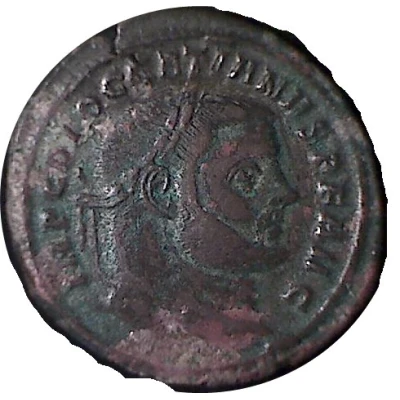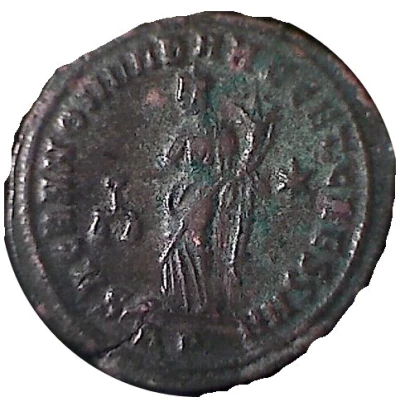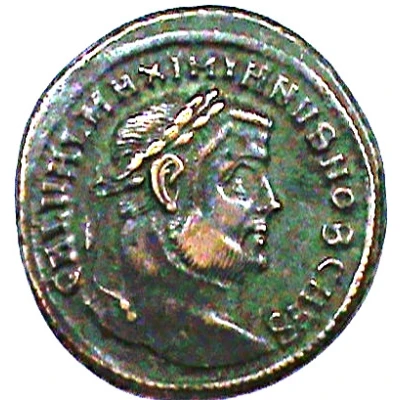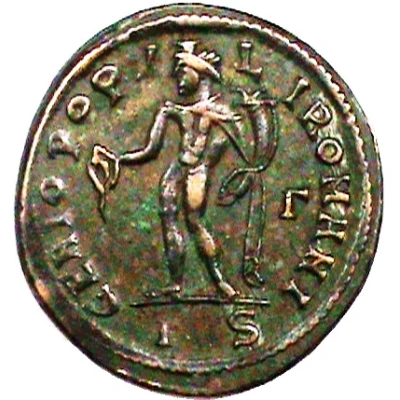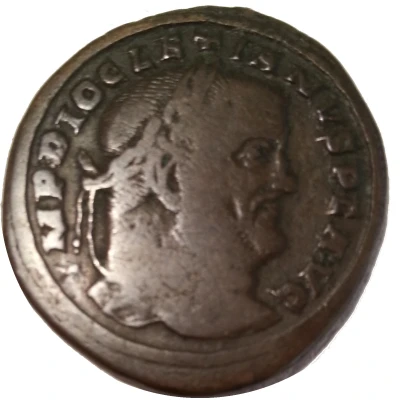
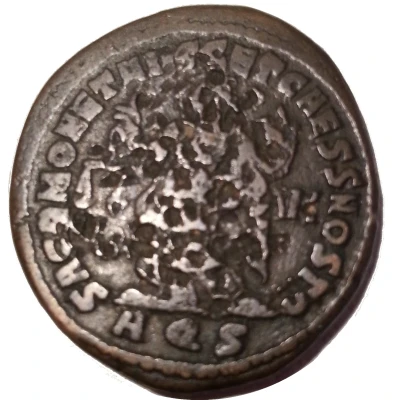

© Alby-Numismatique
Follis - Diocletianus SACR MONET AVGG ET CAESS NOSTR; Aquileia
| Bronze | 10 g | 29 mm |
| Issuer | Rome › Roman Empire (27 BC - 395 AD) |
|---|---|
| Emperor | Diocletian (Gaius Aurelius Valerius Diocletianus) (284-305) |
| Type | Standard circulation coin |
| Years | 302-303 |
| Value | Nummus / Follis (¼) |
| Currency | Argenteus, Reform of Diocletian (AD 293/301 – 310/324) |
| Composition | Bronze |
| Weight | 10 g |
| Diameter | 29 mm |
| Shape | Round (irregular) |
| Technique | Hammered |
| Demonetized | Yes |
| Updated | 2024-10-05 |
| Numista | N#57588 |
|---|---|
| Rarity index | 93% |
Reverse
Moneta standing left, holding scales in right hand and cornucopiae in left hand.
VI in right field.
Mintmark in exergue.
Script: Latin
Lettering:
SACR MONET AVGG ET CAESS NOSTR
| VI
AQS
Translation:
Sacra Moneta Augustorum Et Caesarum Nostrorum
(Holy Moneta of our Augusts and our Caesars)
Edge
Plain
Comment
Struck in 302-303 by 1st and 2nd officina only. The field-mark VI does not represent the officina but the sixth issue of this type of coin.RIC lists several variants given obverse lettering and the cut or not in the obverse lettering after AVGG, while Cohen groups all variants under the same #435.
Interesting fact
One interesting fact about this coin is that it was issued during the reign of Diocletian, who was the last emperor to attempt to reform the Roman Empire's currency system before its eventual decline. The Follis coin was introduced by Diocletian as a replacement for the older denomination of the Roman Empire, the Antoninianus, and it was designed to be a more stable and reliable currency. Despite these efforts, the Roman Empire's economy continued to struggle, and the Follis coin ultimately became a symbol of the empire's decline and fall.
